How To Make a Japanese Zen Garden In Your Backyard
If you’re looking to add a touch of peace and relaxation to your garden design, a Japanese zen garden is the perfect solution. These simple gardens are easy to maintain and can be customized to fit your space. We’ll show you all the inspiration and ideas you’ll need to create a zen garden in your own backyard.
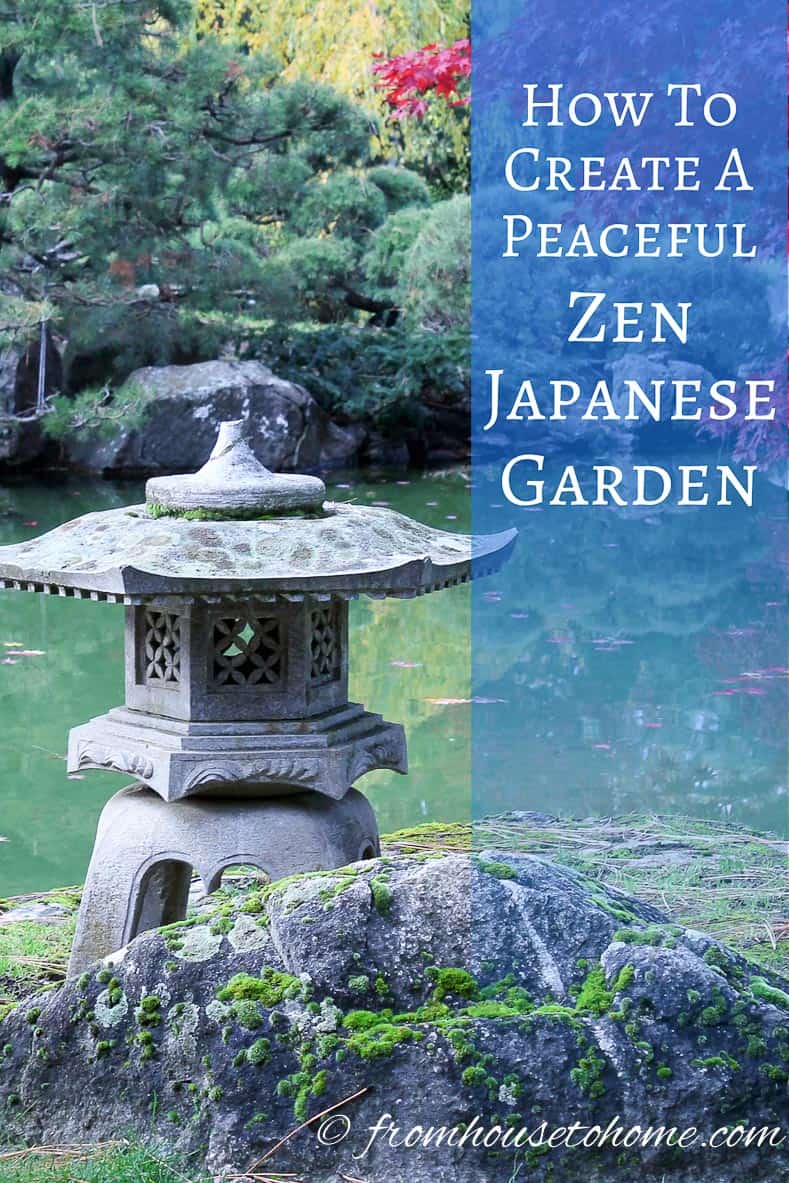
Have you ever wanted to create your own zen garden, but didn’t know where to start?
Zen gardens can be a great way to relax and escape from the stress of everyday life.
For quite some time, I have been wanting to do something like this in the back corner of my yard.
And after visiting a few Japanese zen gardens, I have decided it’s the perfect solution.
So I put together a list of ideas and inspiration for creating one of these relaxing gardens in your own backyard.
1 | Make An Entrance
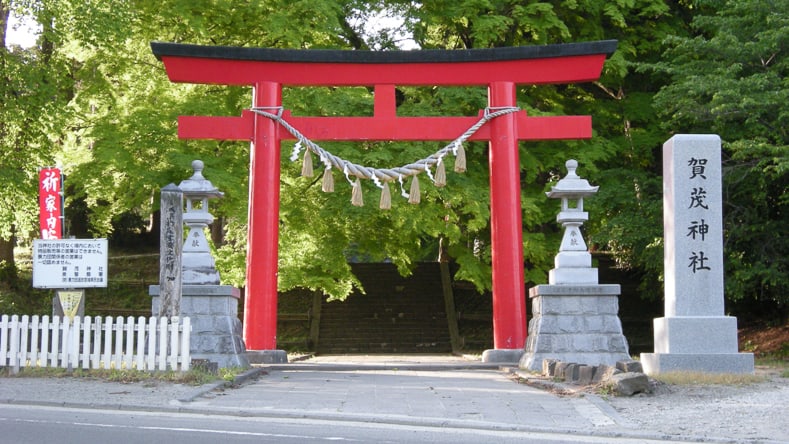
Japanese gardens are all about creating an element of mystery by not allowing the whole garden to be seen at once.

An entry way with a large (but see-through) gate creates that sense of wanting to see more in this garden created by Zeterre Landscape Architects.
2 | Use Water Features
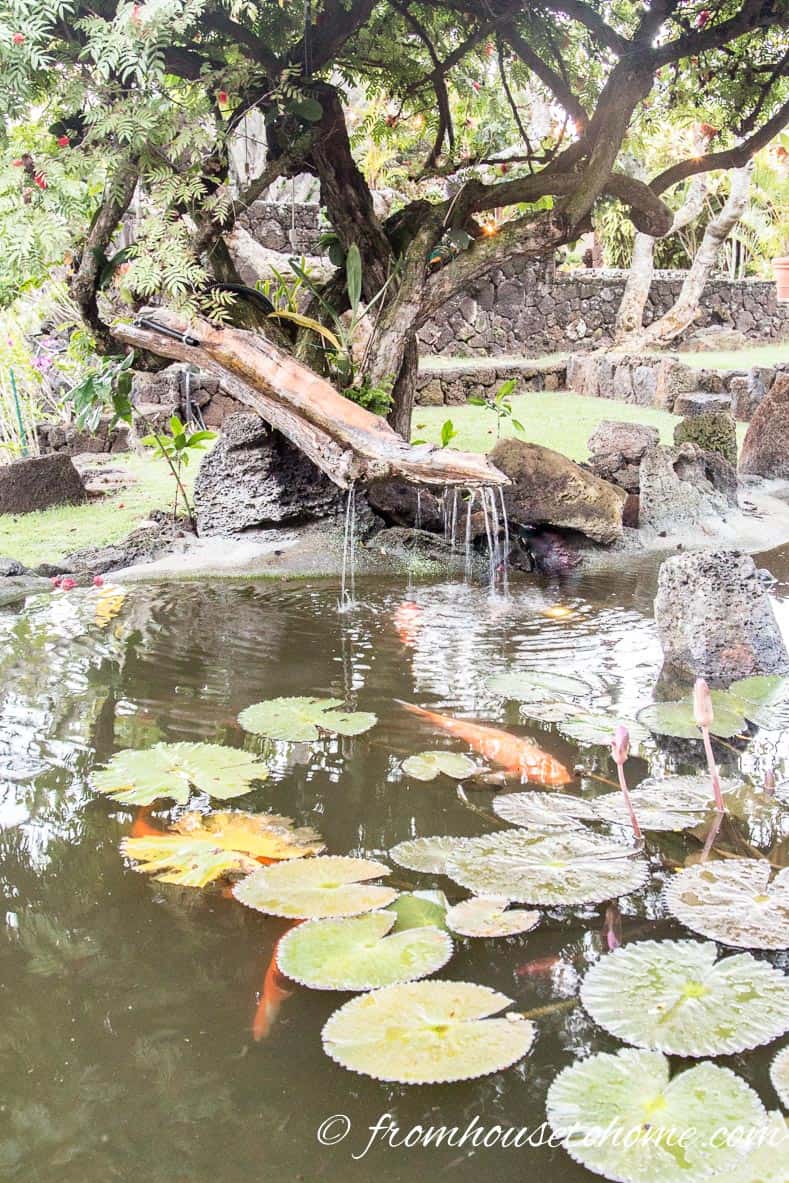
Water is a central element of many Japanese gardens (and it definitely helps with the zen feeling!). Fountains made of wood leading into a koi pond with lily pads are one way of adding this element.

Large gardens often have well-manicured landscaping around very large ponds.
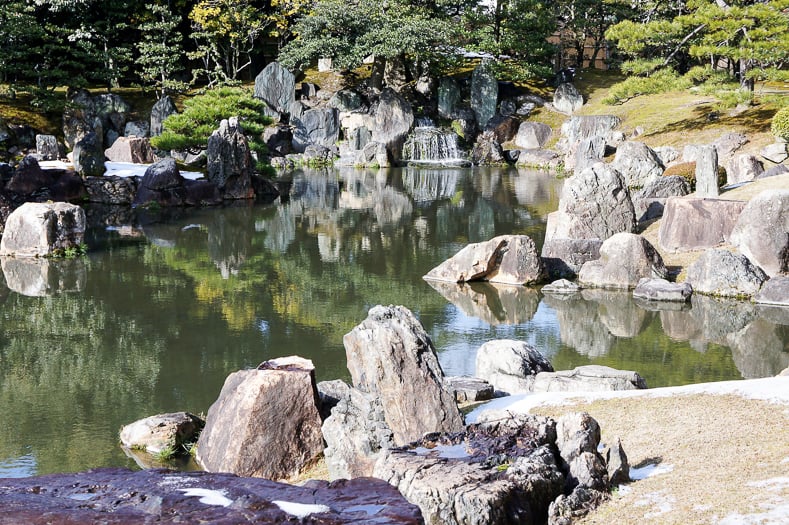
Large rocks and waterfalls are also part of the traditional Japanese garden landscaping.
But a basin with a bamboo dipper also works for smaller areas.
3 | Or Create The Illusion of Water

In places where water is not practical (or just not wanted), dry river beds can be made out of sand (or crushed white granite) to represent water.
The sand is carefully raked to make it look like water and waves. In this picture, it almost creates the illusion of movement.
Larger rocks are placed along the sides with some in the middle to create a realistic looking river bed.
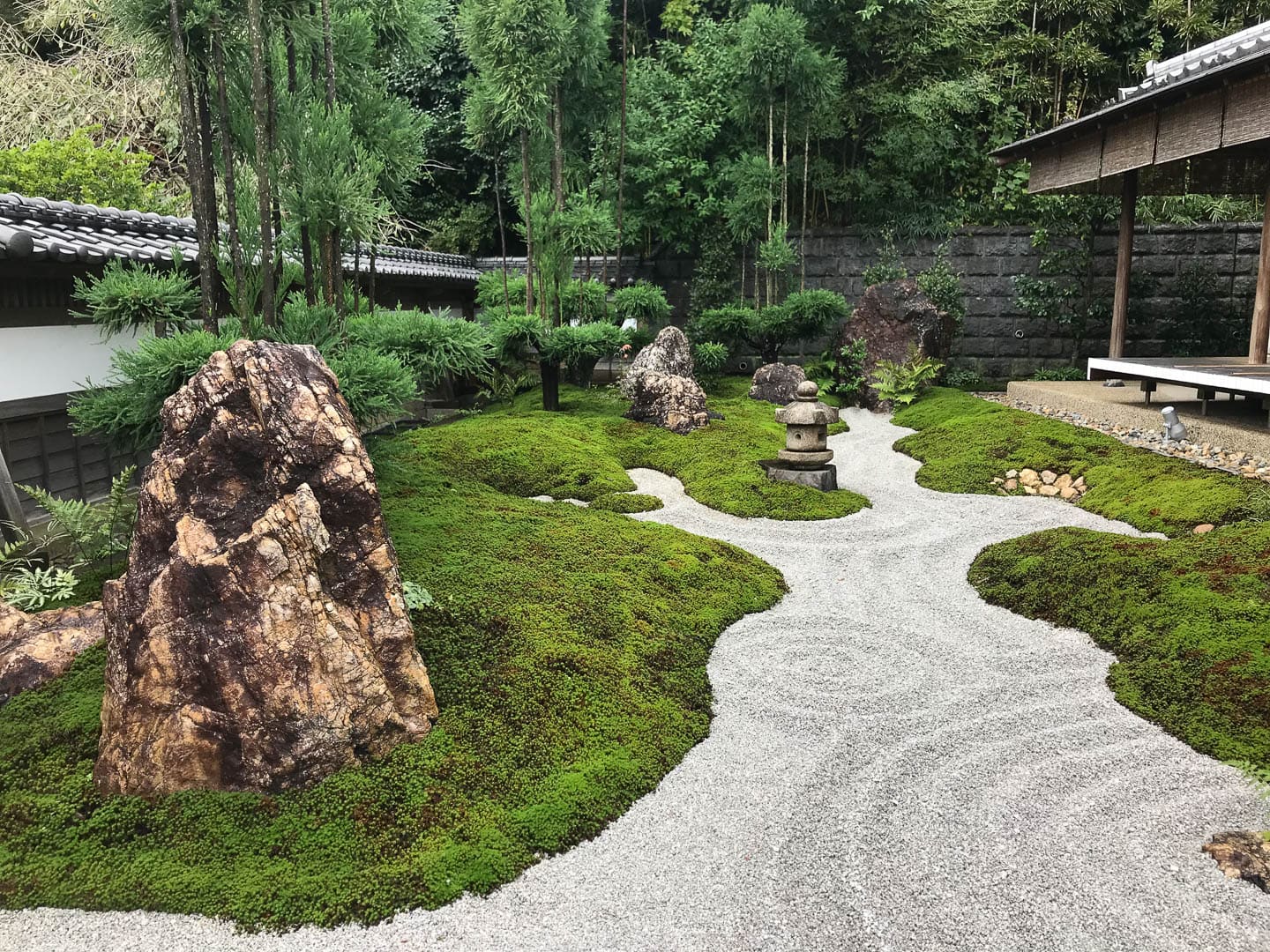
I think creating a dry landscape like this is what I’ll do in my garden. With all the trees at the back of my yard, I’d be cleaning leaves and algae out of a real pond all day long!
4 | Add An Island
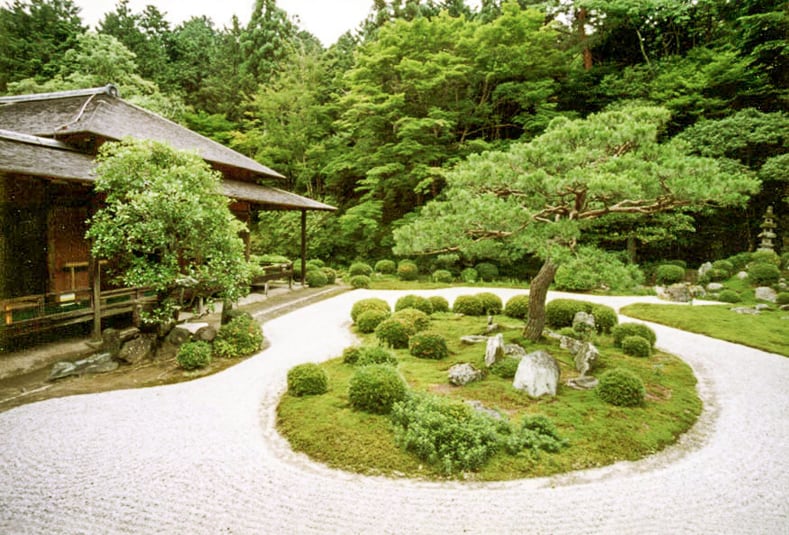
Landscaped islands in the middle of the pond (or sand as the case may be) are another common design element of Japanese gardens.
According to this educational site, islands figure prominently in Japanese myths, so many people believe they were included in ancient Japanese gardens because of their symbolic meaning.
Large rocks in the middle of the island represent mountains.
5 | Build a Bridge
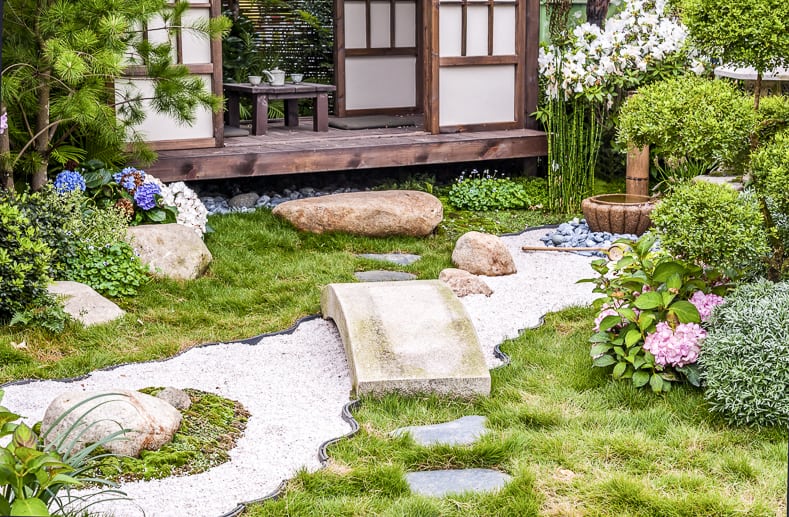
With all of that water, it makes sense that bridges are also a featured element in Japanese gardens.
They are usually made of natural materials like this curved stone bridge crossing a dry river.
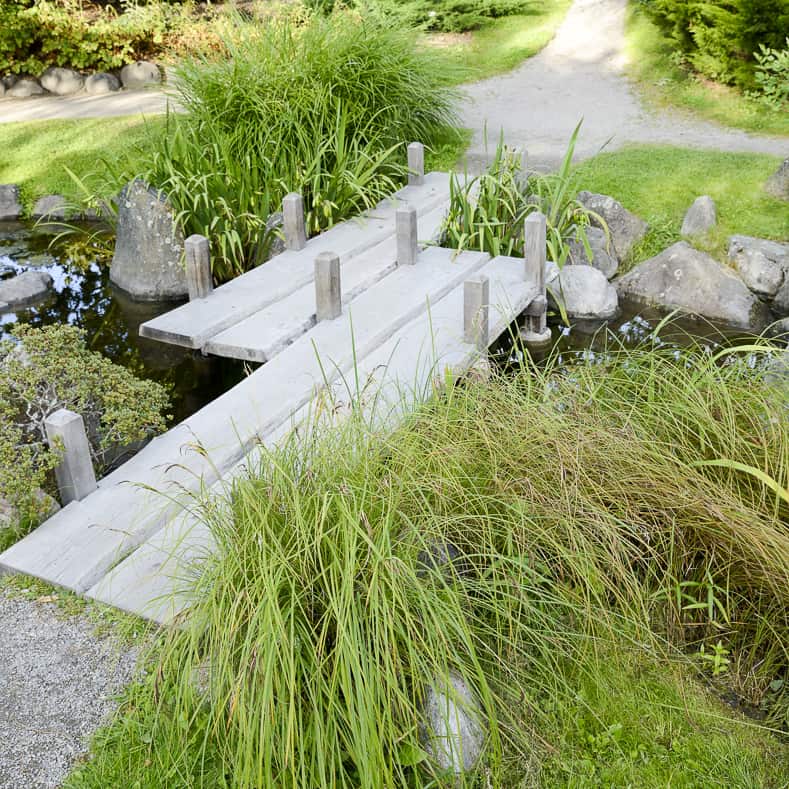
A wooden plank bridge is another option that is a little easier to build if you are spanning a wider distance.
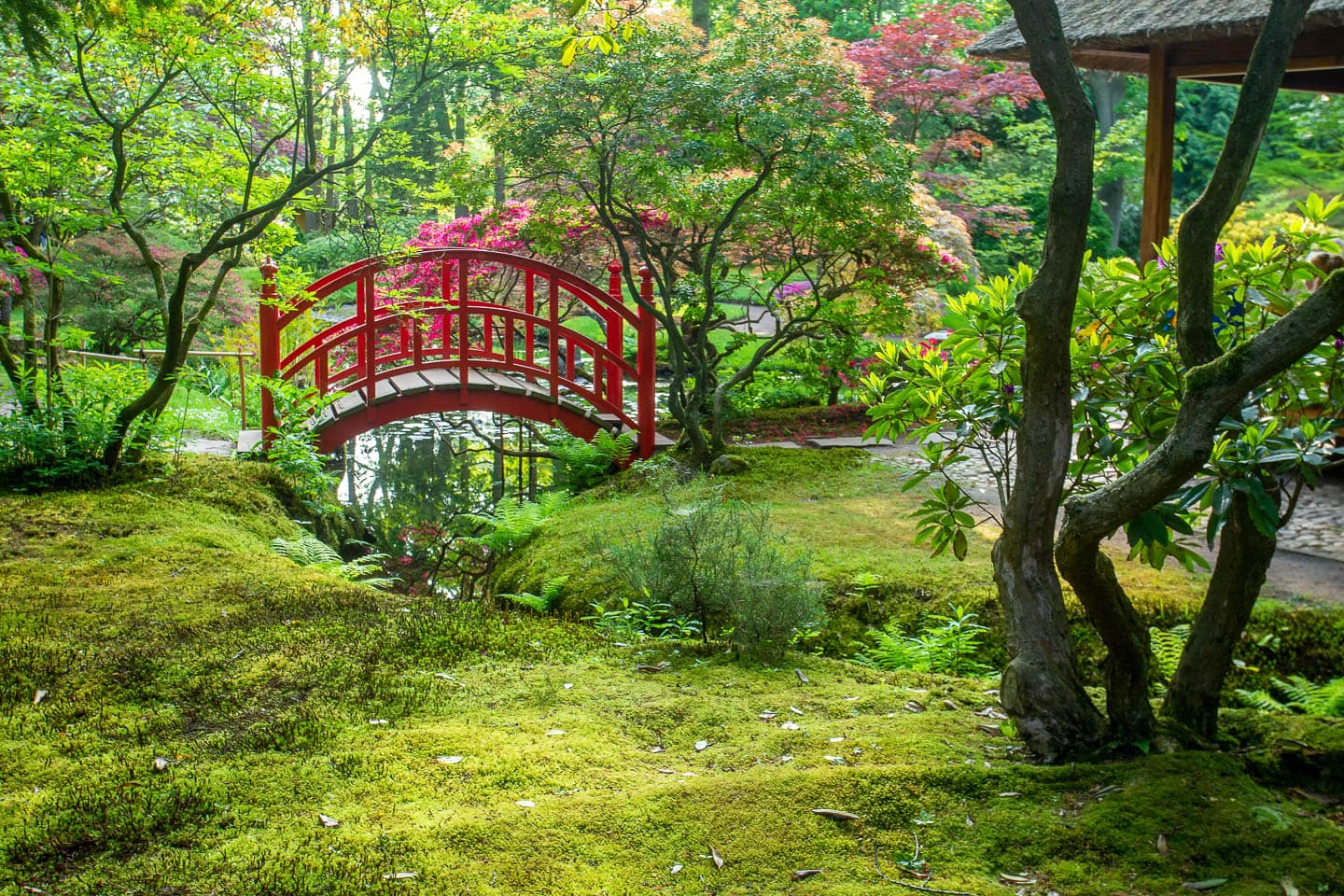
Or if you want something a little more elaborate, a rounded wood bridge with red railings is stunning.
6 | Install Paths
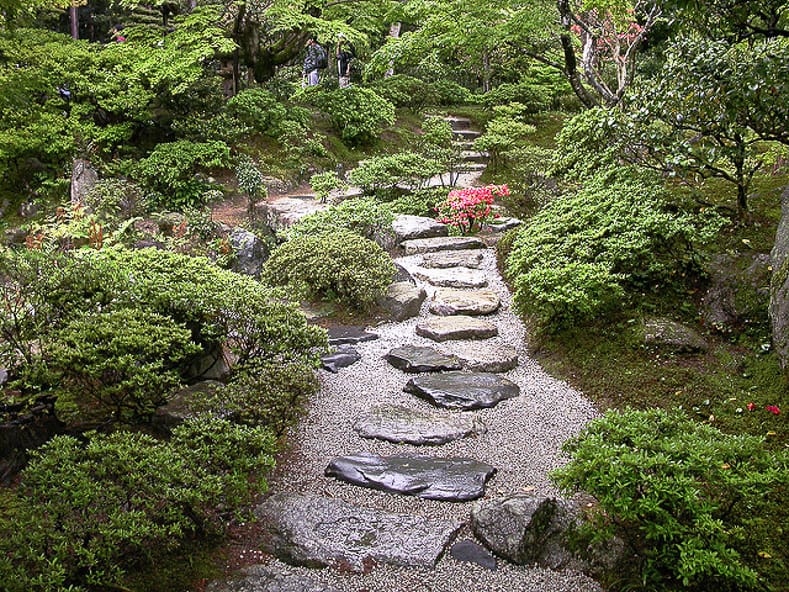
Winding garden paths help to draw you into the garden, and lead you to the next “room”.
Using large stepping stones in a sand or gravel path is a common way of creating walk ways.
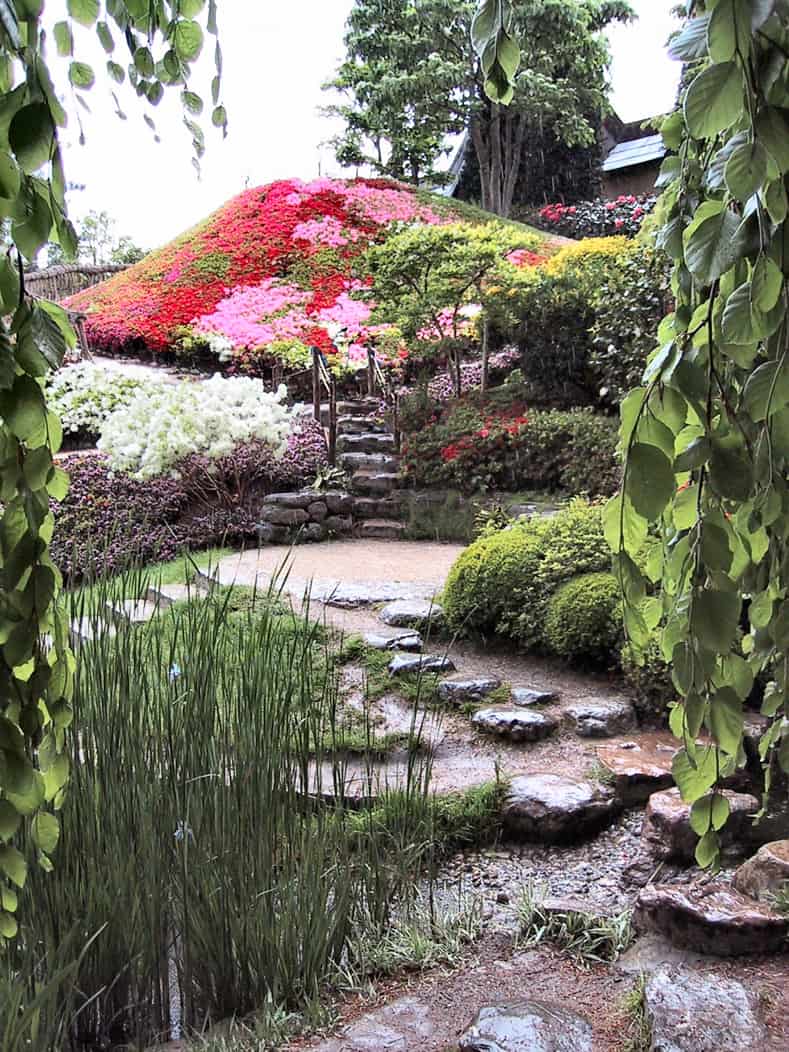
Those same large stepping stones can also be used to make stairs to make hills easier to climb.
7 | Plant Evergreens
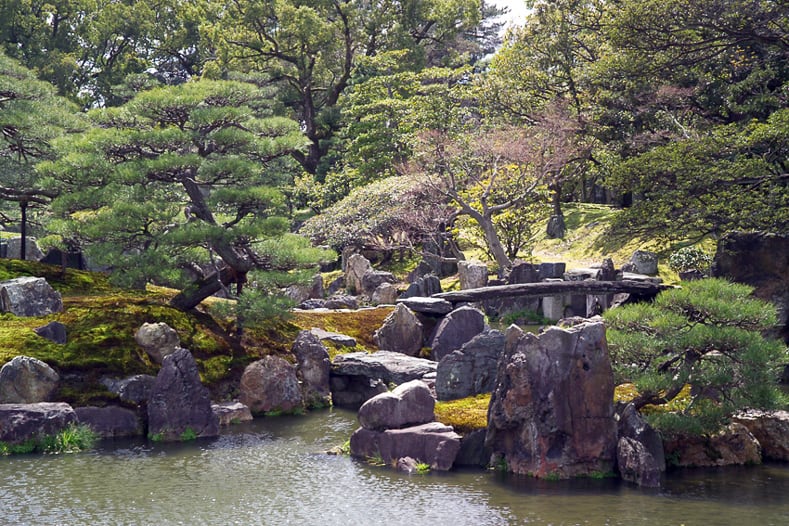
Japanese gardens make use of clipped pine trees (like the ones shown above in Nijojo gardens) to add structure and year-round interest.
However, standard evergreens will add the same effect even without all of the effort of clipping them.
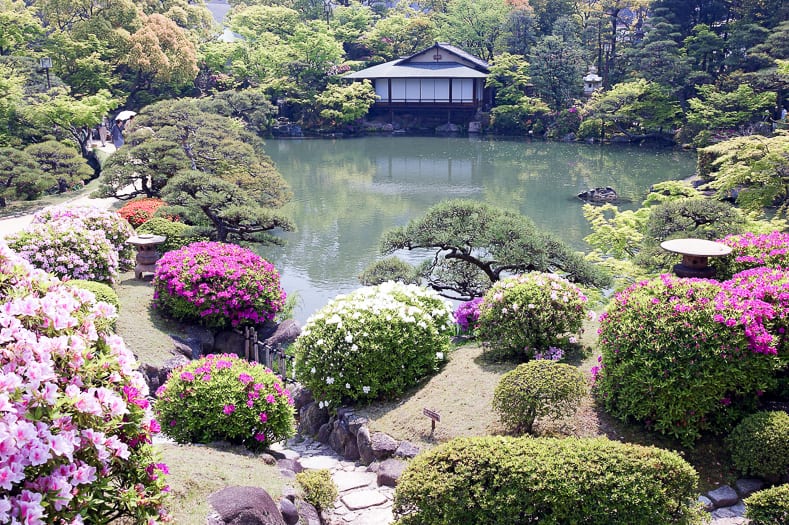
Azaleas are another evergreen that is used extensively in Japanese gardens. They are also usually clipped, and they have the added benefit of beautiful spring flowers.
8 | Add Interest With Plants
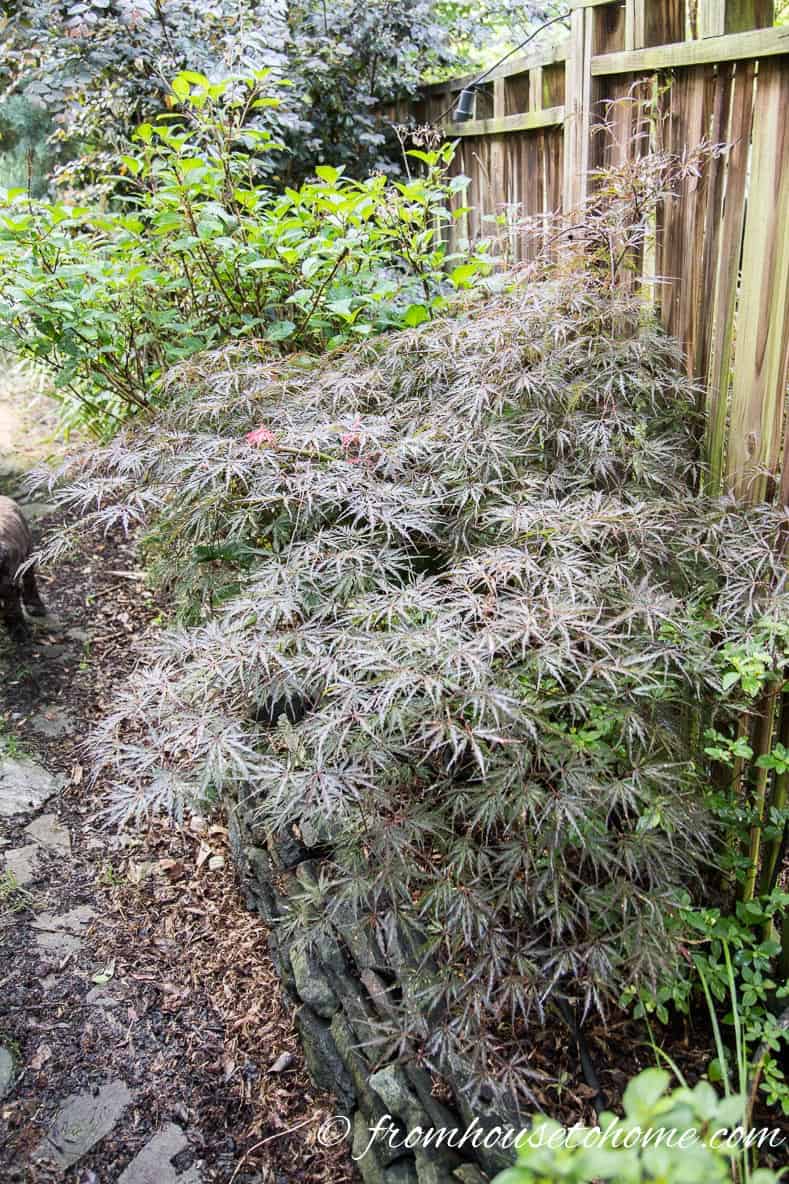
Japanese Maples are a commonly used plant in Japanese gardens.
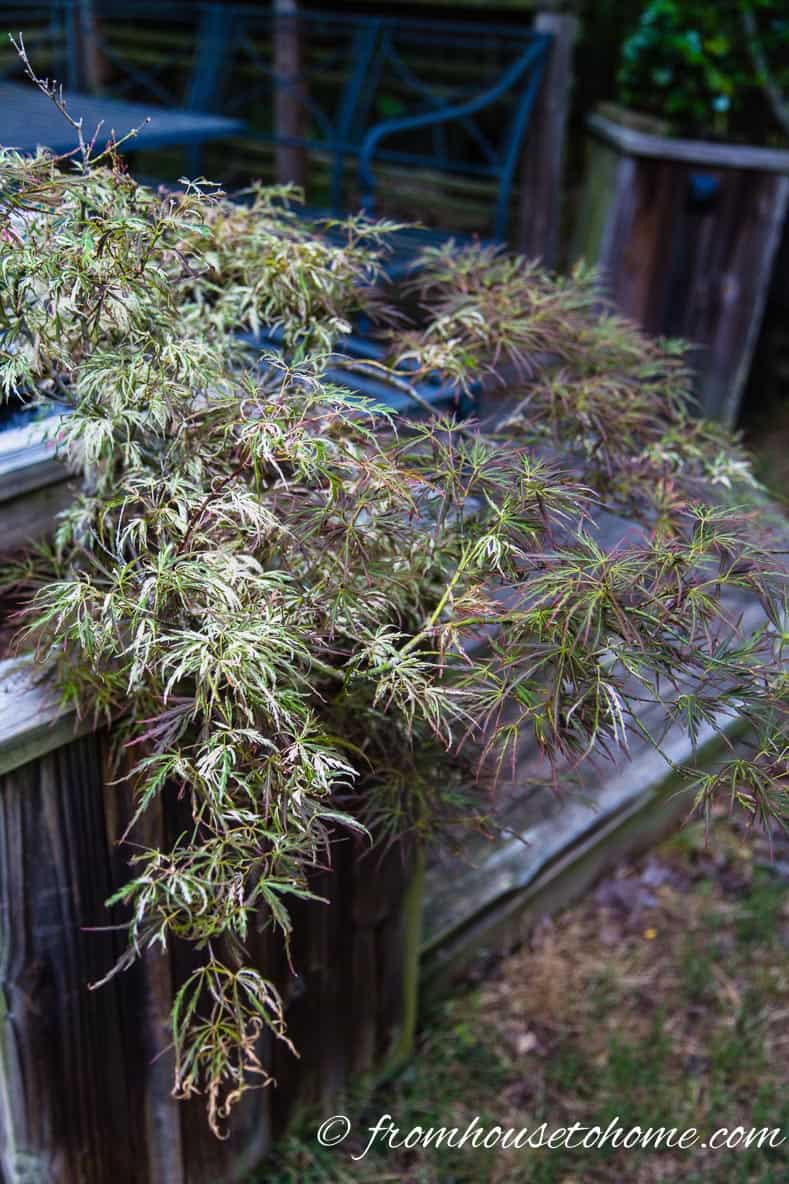
They have an interesting shape and delicate leaves that look beautiful in the garden.
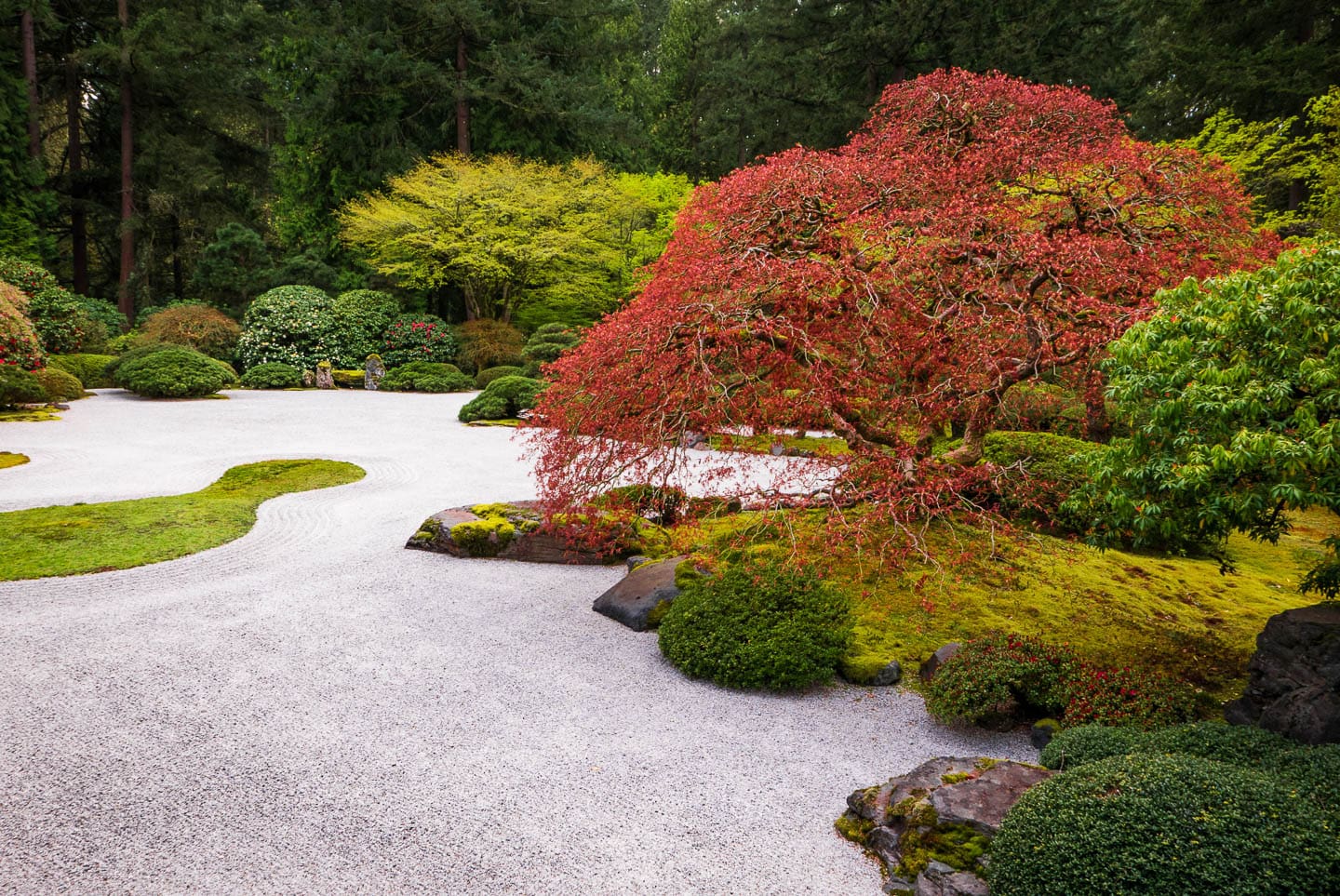
They also add some more color to all of the evergreens.
Especially in the fall when they turn a bright red.
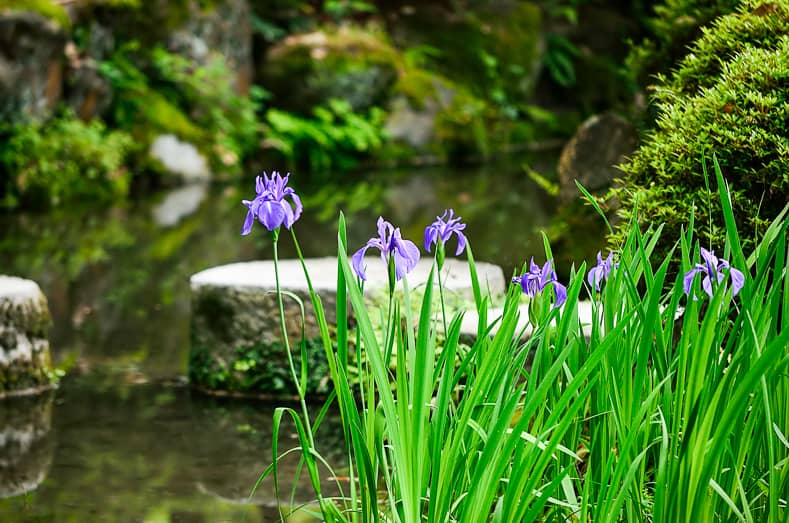
For flowering plants, soothing purple and white irises suit the zen feeling of a Japanese garden.
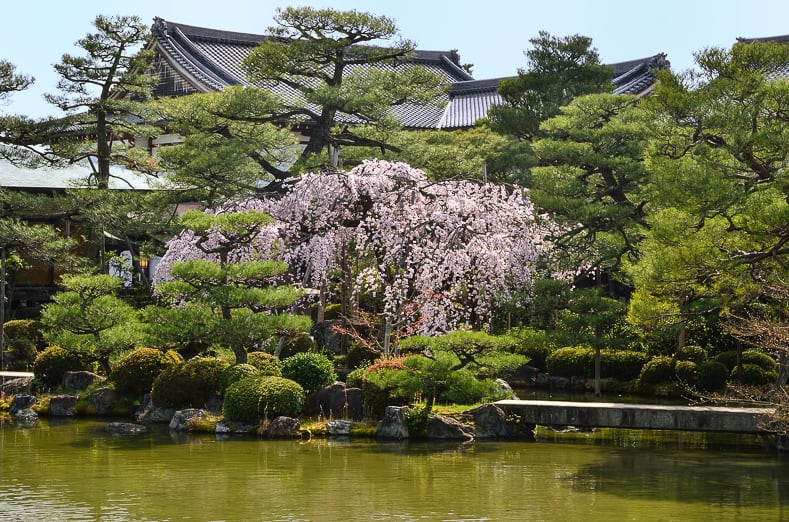
And the flowing branches of weeping Japanese cherry trees and Wisteria also fit right in. (Although wisteria is very pretty, it can be quite invasive, so be careful where you plant it).
9 | Add a Japanese Tea House
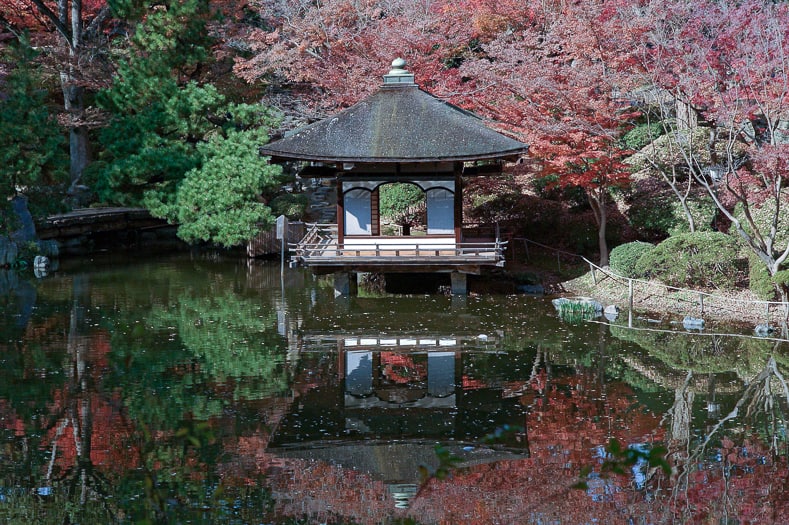
The Japanese tea house adds some architecture to the garden, and provides a destination.
They are often shaped like zen temples.
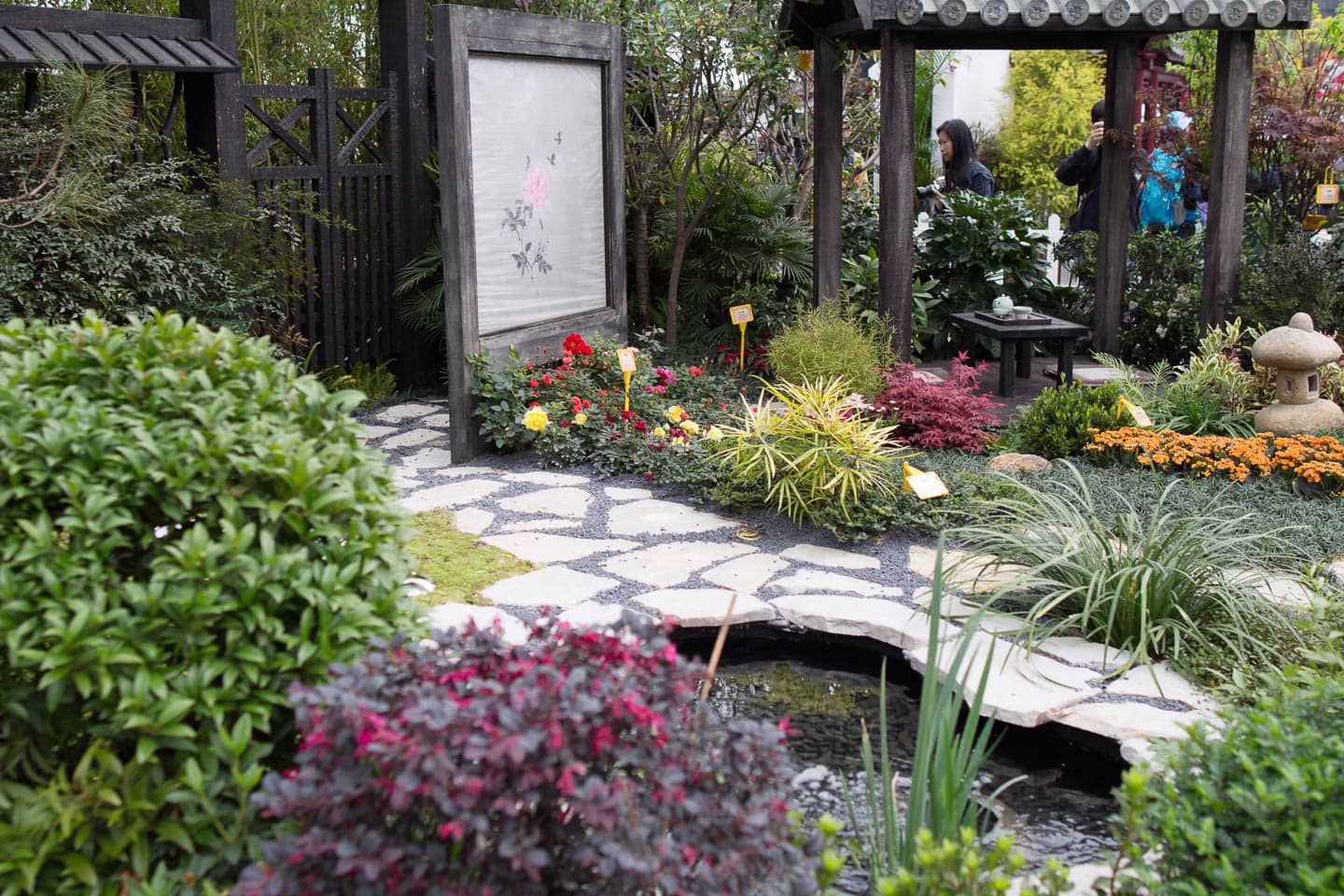
It doesn’t have to be a large space, but should have a beautiful view of the garden.
10 | Install A Stone Lantern
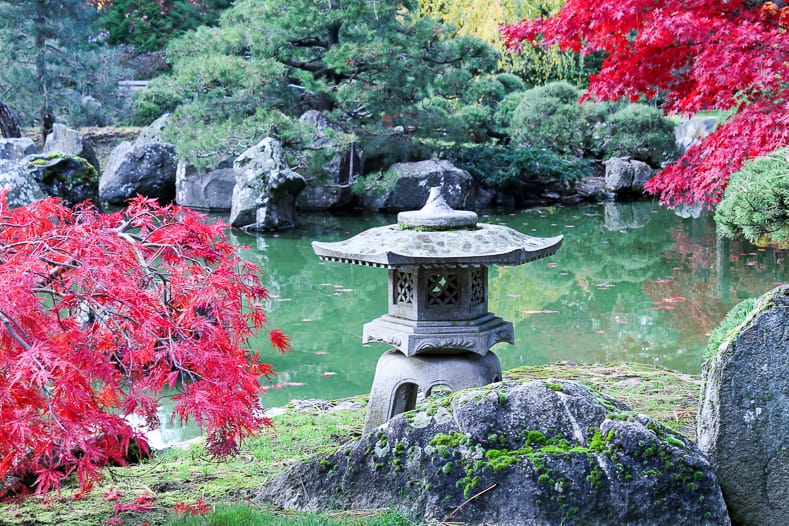
The last piece of zen garden design are the traditional Japanese stone lanterns that can add light to your garden, or just look beautiful.

Just like regular landscape lighting, the stone lanterns are often placed in strategic locations like close to the tea house or in dimly-lit areas of a path.
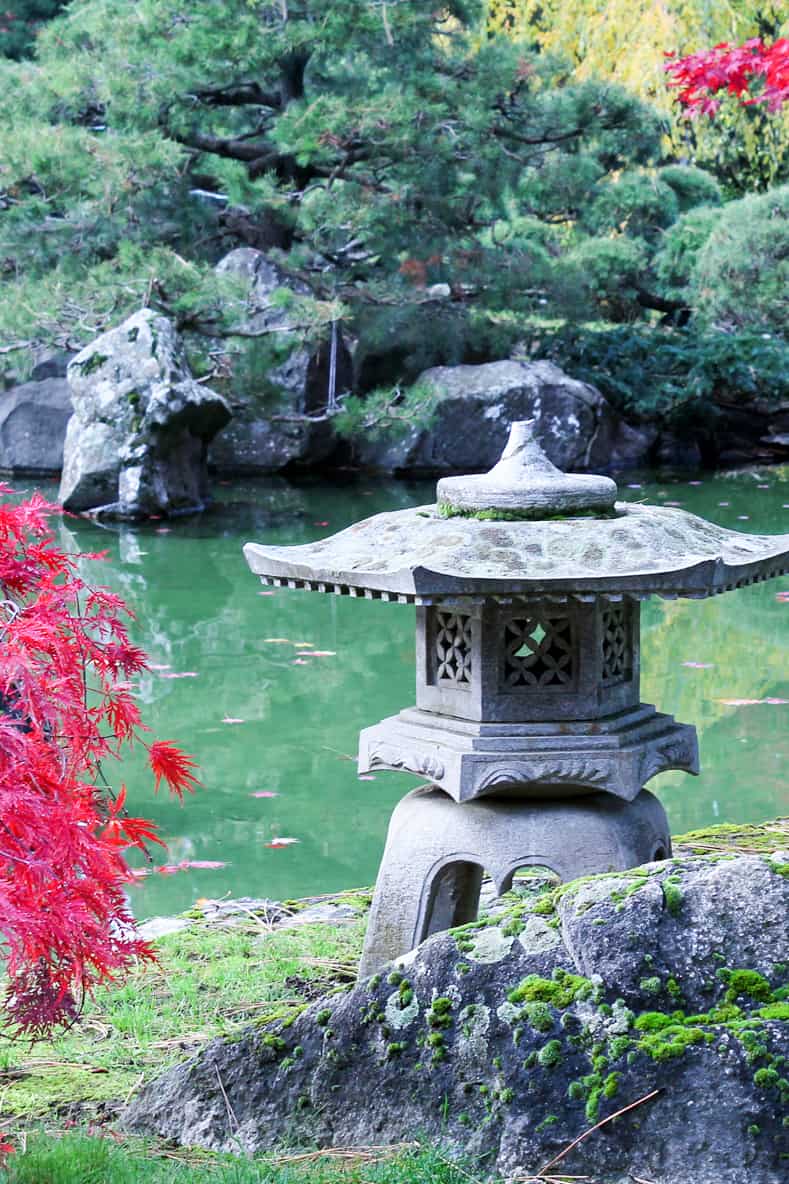
Now that I have some inspiration, I’m off to start planning my own backyard Japanese zen garden.
Have comments or questions on elements of a zen Japanese garden? Tell us in the section below.
Pin It So You Don't Forget It!
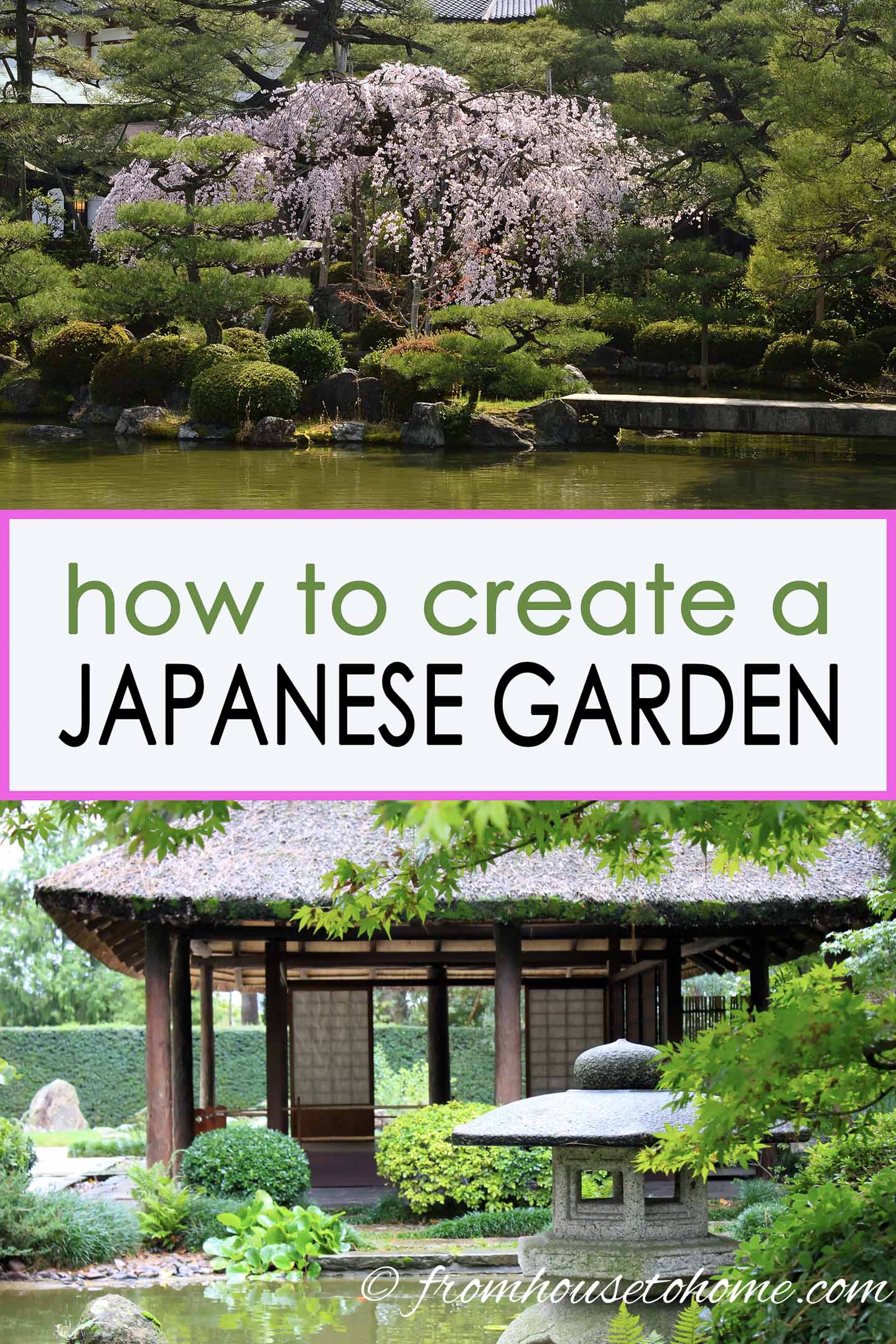
This post was originally published on January 6, 2017 but was updated with new content on November 23, 2024.


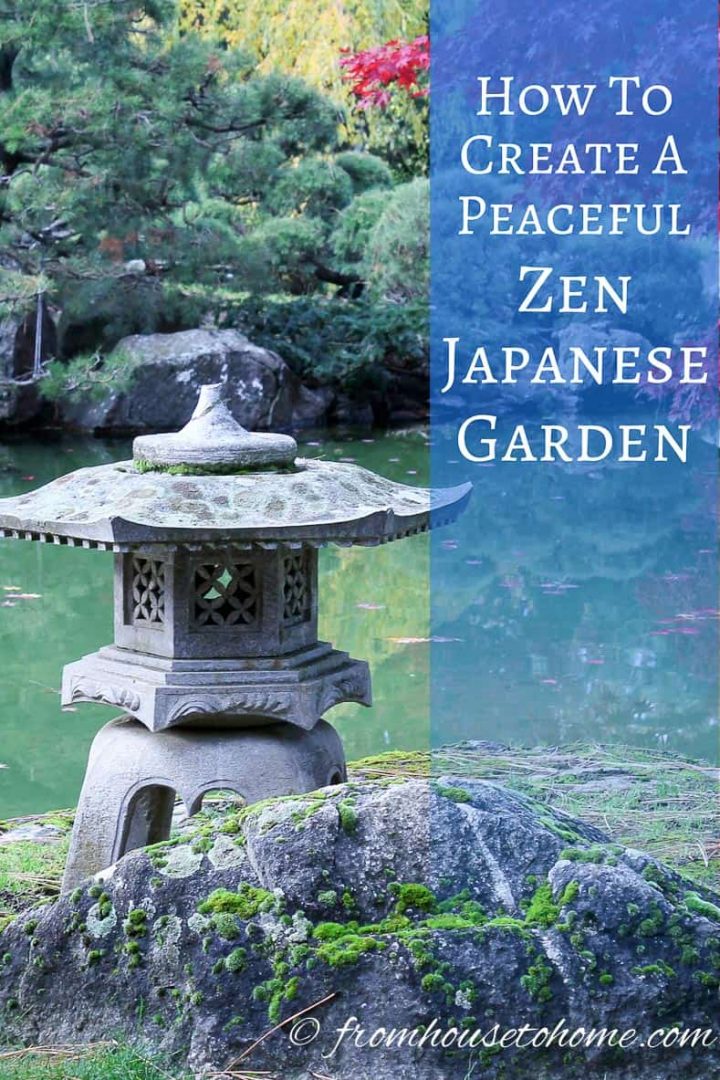
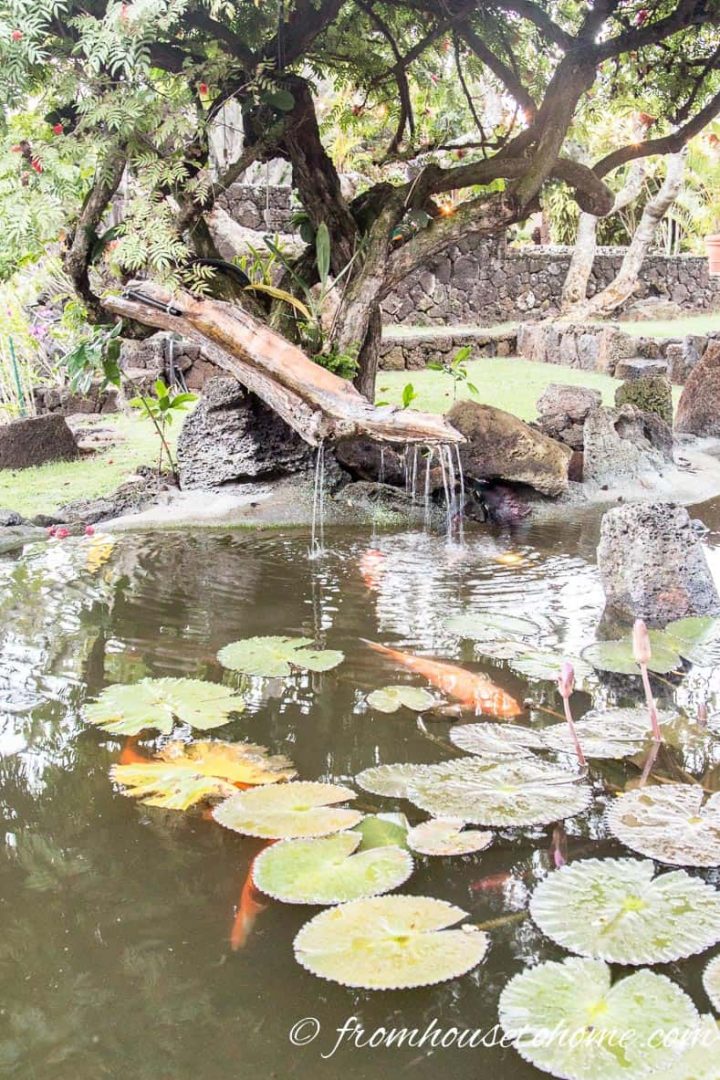














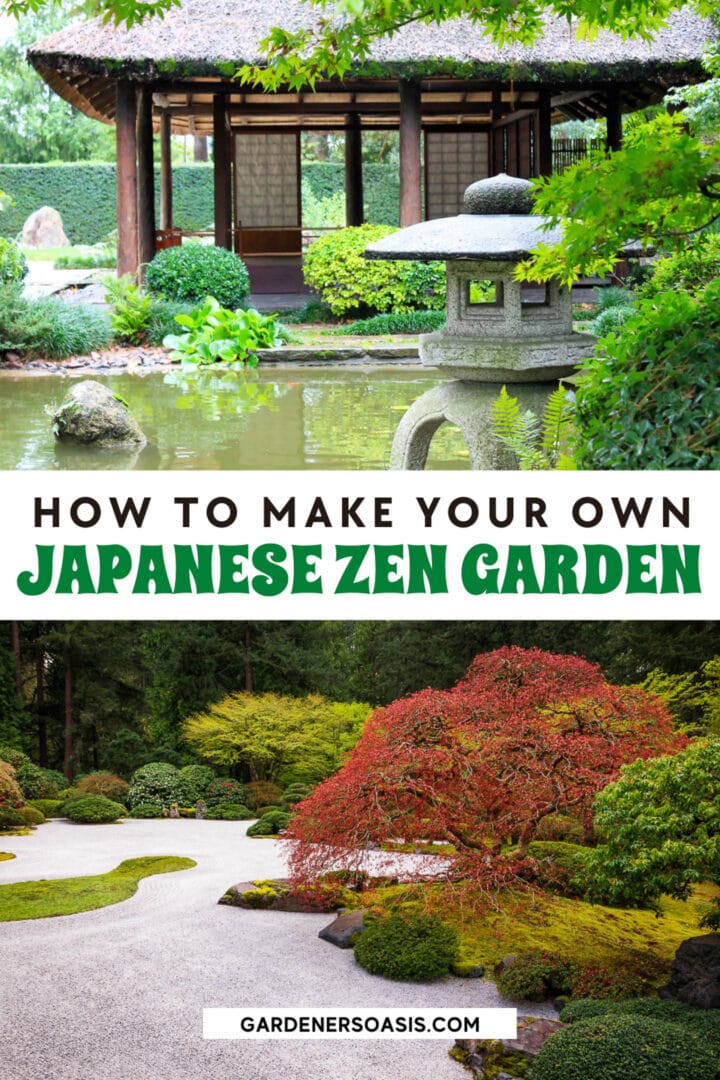





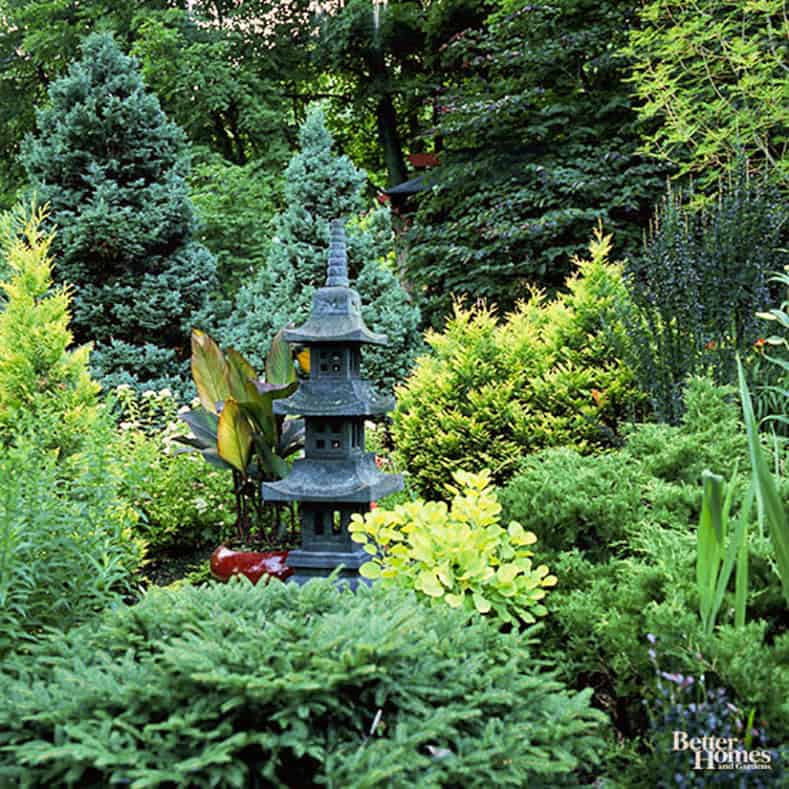
Japanese garden pond and fountain Water is a central element of many Japanese gardens (and it definitely helps with the zen feeling.
Amazing and detailed article. Thanks. Its definitely aids beauty with relaxation to the garden.
I have just finished my waterfall and am looking at obtaining 2 x Japanese Laterns to compliment it, one for each side, have been looking at many sites but still undecided, prices do vary a lot from site to site with some charging rather high prices, looking at around 40cm in height or just over, anyone know of any nice sites who will deliver to just outside Edinburgh area, many thanks
Hi Bill…In the United States, I have had good luck finding Japanese Lanterns on wayfair.com. I’m not sure if they have the same stock on the UK site (wayfair.co.uk) but you could try there.
So beautiful, really enjoyed the extra information about what and where and why those items are placed. Thank you!
Thanks, Barbara! I’m glad you liked it.
It is hard to have something like a Zen where I live in Colo. because of the winters. I planted three Japanese Maples and they all died. I was told to plant them on the north side of a building and then I read about them that they could be planted anywhere. I guess it is not a hardy winter tree. I am making a small Zen now but I have plenty of room . To much work for an old man of 82.
Hi Art…Japanese Maples can be a little tricky to get going when you first plant them. But I think you should be able to find some varieties that will grow in Colorado (there are some pretty hardy ones). You’ll just need to make sure they are well watered, not in a spot that is too windy and maybe give them some winter protection for the first couple of years. Having said that, a lot of zen gardens have more hardscape features than plants, which might be easier for you to maintain 🙂
your blog is realy helpful for me . thank you so much
Thanks, Frank! I’m happy you found it helpful.